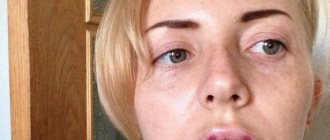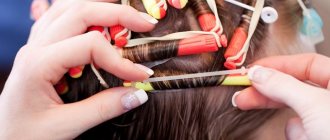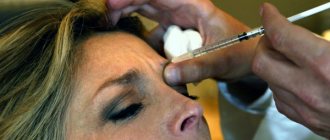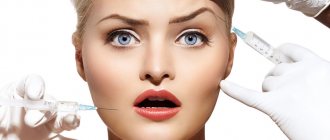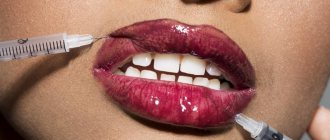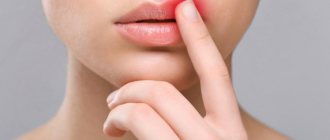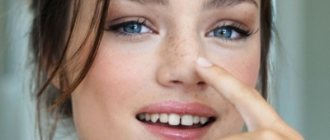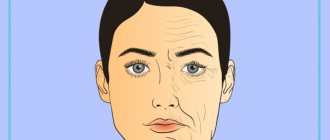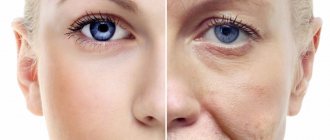Many people have noticed that lately the effects of Botox have become shorter. Previously, the effect lasted about 6 months, now it lasts about 3. Addiction? Do cosmetologists dilute the drug more strongly? Has the composition of the drug changed?
Dermatocosmetologist Olga Ibrakova (Tori clinic) says: “We, cosmetologists, also noticed a decrease in the duration of the Botox effect. This issue has been discussed more than once at conferences, and requests have been written to the manufacturer. The official answer is that the composition of the drug has not changed and the duration of the effect is the same, however, due to changes in the lifestyle of patients, it may decrease.”
Botox – what is it anyway?
Botox is a weakened, purified neurotoxic substance produced by the bacterium Clostridium botulinum, which is combined with human serum albumin. The active ingredient is botulinum toxin. Scientists began actively studying the substance a century ago, when they managed to isolate the toxic component from the bacterium and determine its paralytic effect on the muscles. Botox has been used in cosmetology for more than 35 years and does not pose a real threat to health due to the insignificant concentration of botulinum toxin when injected into facial muscles.
Botox is used to correct the oval of the face, eliminate wrinkles on the forehead, nasolabial triangle, and around the eyes. Injections are effective in relieving hyperhidrosis. In addition to the aesthetic effect, there is a restoration of the water balance of subcutaneous structures, deep hydration of fibroblasts, stimulation of the synthesis of natural collagen and elastin. The injections begin to work almost immediately, the maximum effect is revealed after a few days.
Note! The effect of Botox is limited if the wrinkles are too deep, multiple, especially localized on the cheeks and chin. The result lasts only up to 8 months.
At what age can you get Botox?
Cosmetic procedures can be used from 12–14 years of age, but botulinum toxin injections are recommended for patients under 20 years of age for special indications. The average acceptable age for the first injection with a neurotoxin is 25–32 years, the indication is the elimination of facial wrinkles and creases.
Until the age of 20, the production of natural collagen is quite intense, so active facial expressions do not cause severe defects or changes in relief.
Injectable botulinum toxin to block muscle activity does not have a pronounced negative effect on the body of a minor patient, but to improve the therapeutic and aesthetic result, later administration is recommended.
Botox injection technique
Before administration, a preliminary consultation with a dermatocosmetologist is required, the necessary procedures are carried out: peelings, dermabrasion of the facial skin, hardware methods of rejuvenation and cleansing. All this is recommended before beauty injections to avoid a decrease in the aesthetic effect. The doctor also evaluates the possibility of injection correction. Manipulation algorithm:
- preliminary skin cleansing, makeup removal, antiseptic treatment;
- marking the work area with a cosmetic marker - for this the patient is asked to make a face;
- sometimes the face is treated with an anesthetic composition;
- administering injections with a disposable syringe, simultaneous facial massage;
- applying a cold compress to reduce irritation and swelling.
For each client, the cosmetologist prepares a special form, which indicates the volume of the administered drug, points of influence, and information about the drug. In addition, opening the bottle with the drug occurs exclusively in front of the patient - this is important to prevent serious complications.
To correct wrinkles on the forehead, up to 8 injections will be required, in the area between the eyebrows – 3-4 injections, “crow’s feet” around the eyes – 2-3 injections in each outer corner of the eye. The volume of the injected substance is calculated individually and depends on the severity of the defects, the depth of the wrinkles, and the age of the patient.
Military use of botulinum toxin
The damaging effect of botulinum toxin turned out to be so strong that the military relied on it as a biological weapon.
One of the first mentions of the use of botulinum to defeat the enemy dates back to 1930, when the famous Japanese military Unit 731 (conducted inhumane experiments with biological weapons) fed Clostridium Botulinum to prisoners.
Later, methods for producing botulinum toxin for military and sabotage purposes began to be developed. During World War II, this poison was the subject of extensive research in the United States, on the basis of which highly purified botulinum toxin type A (BTA) was obtained - the most dangerous to humans. It was later that it began to be used in medicine and cosmetology, but more on that later.
The issue of using botulinum toxin as a bacteriological weapon was also developed in other countries: Germany, England, Canada. According to one version, the British intelligence services supplied them for individual operations of members of the Czech resistance in the early 1940s.
Allegedly, in the 1970s, experiments with botulinum toxin were carried out on Vozrozhdeniya Island in the Aral Sea, a secret Soviet testing site for bacteriological weapons.
In 1975, the US Army adopted botulinum toxin under the code XR. It was used in the form of an aerosol, inhaling which the enemy died within three days.
You can find information that in the 1990s, four countries already produced botulinum poison for military purposes.
How many days after the injection does Botox take effect?
When does Botox start working? The effect of botulinum toxin begins almost immediately. After the injection, paralysis of the muscle structures in the area of active facial expression occurs, but the crease is still visible. The maximum effect is revealed 3-5 days after the procedure, which is associated with a more uniform distribution of the drug within the dermal layers.
How does Botox smooth out wrinkles?
The mechanism of action is due to a block in the activity of neuromuscular structures, due to which the load on the usual muscles during facial activity stops. Gradually, the area of muscle atrophy smoothes out, and at the same time, the relief of the dermis. During the entire period of Botox action, a useful habit is developed to control emotions and excessively express them through the facial muscles.
The neurotoxic effect on neuromuscular connections is reversible; after the active substance is removed, the conduction of nerve impulses is restored, and the previous muscle contractility is normalized. This is when correction is required.
How do you know if Botox has worked?
After injection therapy, the possibility of using familiar muscles in facial expressions is eliminated. So, if the manipulation covered the forehead area, then further frowning does not lead to the formation of vertical or horizontal folds, if the area between the eyebrows does not form the same crease. The maximum effect is noticeable after a few days.
Note! It is important to understand that beauty injections do not tighten the skin or create the effect of a wax mask. With the correct injection technique, the patient’s face still expresses sadness, anger, joy, sympathy, only without the formation of rough folds. An experienced cosmetologist will not disturb the client’s natural image; his task is to get rid of the defect and rejuvenate the skin.
How long does it take for a clear effect?
The result is noted immediately after administration, facial expressions are preserved, but the muscles that are usually involved will be immobilized. In addition, the skin becomes noticeably fresher, shine, a healthy tone appears, and makeup fits perfectly. The product opens to its maximum under the skin after 3–7 days, this is due to an increase in concentration in the subcutaneous structures and continued distribution of the substance.
Other recommendations after Botox injections
The list of prohibitions includes:
- drinking alcohol (even light);
- taking antibiotics;
- taking antidepressants (in some cases, be sure to consult a specialist);
- lack of facial expressions (the opposite is recommended: actively use it so that the muscles work and contract);
- do fitness;
- use cosmetics (24 hours).
A general but important recommendation after Botox on the forehead: do not rub, do not knead, do not scratch. Such an active effect on the injection area, unfortunately, will not have the best effect. Refrain from using masks, do not try to smooth your face manually, over time the drug will do its job and you will be amazed at the magical effect. Do not be alarmed by the inability to move your face as before, this is normal, this is a side effect of the drug, in fact, for which they choose Botox. How to behave further after the procedure? Come for an appointment with your cosmetologist in the coming days. He will check how the exposure process is going and give you further advice.
What happens to the face when Botox wears off?
There are many myths associated with stopping the action of a botulinum toxin-based drug. Cosmetologists talk about several main signs of drug removal:
- restoration of muscle contraction,
- facial activity forms new creases;
- decreased skin tone;
- return to previous shapes.
Facial asymmetry is possible and is considered as a complication caused by inadequate administration of the drug, choice of dose, and area of injection. Usually Botox is absorbed evenly, no significant changes are detected.
Is it possible to stop the effects of Botox?
The duration of action of beauty injections is influenced by the following factors:
- metabolic features;
- skin type;
- medications;
- cosmetic procedures, physiotherapy;
- visiting a solarium, bathhouse or sauna.
All these factors accelerate the removal of botulinum toxin from the body and restoration of muscle activity of the facial muscles. This way you can stop the effect of Botox a few weeks after the injection.
Why is Botox dangerous? Procedure
It is believed that in order to reduce the side effects of Botox to zero, it is enough to fall into the hands of a skilled doctor. In principle, everything is so. The procedure for administering the drug itself takes very little time, about half an hour. A little more if the scope of work is wide. However, the preparation can be much longer.
The doctor needs to carefully examine his patient's face. At the same time, he is usually asked to frown, smile, and grimace in different ways so that all the folds are clearly visible. The specialist immediately marks the places where he plans to inject. Then he needs to calculate the amount of the drug and take into account all the details of its administration: depth, speed, etc.
How long does the effect of Botox last?
The question of how long the effect of beauty injections lasts cannot be answered universally. The duration of the drug’s effect is always individual, which is associated not only with age and the depth of facial wrinkles, but also with the nature of metabolic processes, the patient’s weight, biochemical reactions in the body, lifestyle and habits, and clinical history. On average, the result lasts up to 8–10 months.
Sometimes patients need repeated correction after 14 days, which is due to the peculiarity of the responsiveness of some muscles to botulinum toxin. If the dose is calculated correctly and the rules of administration are followed, the drug has a maximum effect within 6 months.
Botox consequences. What reasons can cause side effects?
The most common causes of complications after the Botox procedure are considered to be medical errors.
The consequences of using Botox are conditionally divided into 3 groups, depending on the root cause of their occurrence:
- Unqualified actions of a specialist/doctor.
- Ignoring compliance with special rules by the patient himself.
- Individual reaction of the body to botulinum toxin.
What mistakes can a doctor make?
The most common causes of complications after the Botox procedure are considered to be medical errors. They are:
- injection of the drug into inappropriate areas of the face that respond inadequately to the process of complete relaxation, resulting in asymmetry of the oval and contours;
- deviations in the choice of the correct dosage, that is, with a smaller amount of botulinum toxin administered, there will be no visible effects from the manipulation, while a slight excess of the dose can turn the face into a motionless mask;
- ignorance or ignoring the rules for subcutaneous/muscular diffusion, which can provoke migration of the drug to neighboring facial tissues, leading to their ptosis (drooping). There are known cases of local accumulation of the active substance under the skin in the eye area, which leads to swelling and local overdose;
- incompetence of the specialist who carried out the procedure with gross violations, which may result in: drooping of the upper eyelid, distortion of facial expressions and facial expressions, drying of the mucous membrane of the eyes due to impaired blinking, bags in the eye area, swelling of the face, asymmetric changes in proportions, paralysis of the circular muscles of the oral area leading to difficulties while eating;
- failure to comply with the temperature conditions of storage of the drug, leading to the loss of its basic properties.
How long does Botox last and how to prolong its effect?
Manufacturers guarantee that the results will be maintained for 6-8 months if the patient is in absolute health and has a moderate metabolism. The effect of the active component can be extended under two conditions - the professionalism of the doctor and compliance with all recommendations after injection therapy:
- exclusion of alcohol - under the influence of ethyl alcohol, blood flow to the face increases, the effect of Botox is reduced;
- ban on visiting bathhouses, saunas, steam rooms, hot tubs;
- protection of the face from direct sunlight;
- limiting physical activity.
Some medications, cosmetic procedures (masks, hardware techniques, physiotherapy), and smoking can reduce the effect of botulinum toxin.
Note! Patients are not recommended to sleep on their face, or to rub their face too intensely while applying care products, washing their face, or removing makeup. In the first week, it is not advisable to use decorative cosmetics.
The effect of Botox on the brain. Study: Botox damages the brain and robs you of happiness
The drug Botox, used to tighten the skin on the face, can cause irreparable harm to health.
According to recent studies, its use is dangerous for vision and brain. It turns out that at least 32 people were blinded by Botox in 2012, reports the Daily Mail. One of the most famous British plastic surgeons, Julian de Silva, says that complications with the use of Botox occur when the gel-like substance accidentally enters the facial artery. “If Botox gets into the artery that supplies oxygen to the back of the eyes, it can lead to vision loss as well as stroke. There is a danger that the substance will block the flow of oxygen to the brain,” said a respected British doctor.
According to one study on the dangers of Botox, in 2012 in Britain, 32 people went blind after using it. In at least four patients, this anti-aging drug caused stroke and brain damage. Interestingly, this is not the first data on the side effects that Botox can cause.
It was previously reported that the popular drug reduces human sensitivity. In other words, the limited ability to express emotions on the face, which inevitably occurs after a Botox injection, weakens the connection between the nerves and the brain. This certainly affects the range of sensations that a person can experience. In addition, for the same reason, Botox prevents a person from feeling happier, because the ability to smile is directly related to our mood.
Doctors complain that Botox manufacturers are silent about the side effects that may occur after injection of the drug.
Contraindications to rejuvenation measures using Botox
Despite the relative safety of botulinum toxin itself, injection correction is not performed for the following conditions and diseases:
- pregnancy, breastfeeding (injections are not given six months before planning pregnancy);
- any inflammatory processes on the face;
- autoimmune pathologies;
- individual intolerance to the components of the drug;
- dysfunction of the kidneys, liver, heart.
Wrinkle correction is not performed on women over 60 years of age due to the high risk of ptosis, jowls, during the active phase of the menstrual cycle, and with muscle hypotonicity of various natures. With weak muscle tone, the administration of the drug further reduces muscle activity, asymmetry and tissue sagging develop.
How often can injections be given?
The frequency of correction is determined by the degree of elimination of the drug from the body. With the initial introduction of a paralyzing substance, correction is required after 8 months, as botulinum toxin is eliminated. During secondary injection therapy, correction is required after 3–4 months, but no more than 4–5 times a year. In this way, it is possible to provide a prolonged result that will keep the muscles in a relaxed state for about 3 years.
With frequent use of botulinum toxin injections, the sensitivity of the skin and neuromuscular structures increases. The drug dissolves quickly, and correction is required more and more often. In such a scenario, the need for Botox is questionable, and radical methods to eliminate age-related changes may be required.
Negative result
Consequences or complications from injections are not at all uncommon; they cannot be excluded even with the high professionalism of the doctor. The thing is that it is impossible to predict how the substance will be distributed, what the response of a particular muscle structure will be to the effects of botulinum toxin. Complications caused by the administration technique are usually limited to facial redness, the formation of papules, pain, swelling, facial asymmetry due to improper distribution of the substance within the neuromuscular chains. Common complications not related to the work of a cosmetologist are:
- headaches, up to the development of migraines;
- sagging of the outer corner of the eyes, eyebrows;
- facial asymmetry;
- double vision, increased intraocular pressure;
- changes in muscle activity in the lip area;
- lumps and papules in the injection area.
There is always a risk of infection after injection correction, which is why it is so important to carry out high-quality antiseptic treatment of the face. Any complications require attention, so if discomfort or external defects occur, you should consult a doctor.
Injections with a drug based on botulinum toxin are an effective and quick method of correcting age-related changes, however, the duration of the effect is strictly limited and is determined by the individual characteristics of the body. The procedure is carried out only after assessing the condition of the dermis and the potential risks from the procedure.
Why is there no result?
The lack of results can be explained by one of the following reasons:
- Failure to follow medical recommendations after injections.
- The patient's age is over 65 years. In some cases, due to severely reduced muscle tone.
Buyanov Sergey Yurievich (Expert Doctor):
When skin folds or creases are caused not by tension, but by weakening of the facial muscles, further sagging of the skin is observed after botulinum toxin injection. That is why consultation with a specialist is necessary before the procedure.
- The drug is not able to have the desired effect in the permissible concentration.
- Individual immunity/resistance to botulinum toxin.
- Illiterate administration or incorrect choice of dosage.
Buyanov Sergey Yurievich (Expert Doctor):
In some cases, the individual anatomical features of the face are of great importance. The fact is that not all facial muscles are constant, that is, in some people they are not developed or are completely absent. In such cases, botulinum toxin injections will have no effect.
How the drug works
The natural toxin affects the nerve impulses that are transmitted to the muscles and cause them to work. Blocking such transmission leads to the fact that motor muscle activity under the influence of the substance is weakened. This helps relieve spasms and also smoothes out even deep wrinkles. The skin becomes smooth, while facial expressions remain alive.
Due to this effect, these injections are called “beauty injections.” Over time, the substance dissolves on its own and is excreted from the body, and the effect ceases. On the face, injections are made in those areas that are most susceptible to active facial expressions and early age-related changes. These are the forehead, eyebrow area, area around the eyes and nasolabial area.
Is it possible to inject Botox if you have a cold?
Botox injections have a number of contraindications. One of them is the presence of a cold.
Experts do not recommend carrying out the procedure if you have a runny nose or a particularly high temperature. This is due to the fact that injections and administration of the drug can provoke an allergic reaction and other unpleasant symptoms and serious complications.
Why can our articles be trusted?
We make health information clear, accessible and relevant.
- All articles are checked by practicing doctors.
- We take scientific literature and the latest research as a basis.
- We publish detailed articles that answer all questions.
That is why it is important to inform the cosmetologist about the presence of a cold and perform the procedure after its treatment.
Thus, the contraindications of Botox for the face are quite extensive, so before deciding on injections, you need to clearly make sure that everything is really in order with your health.
Healing period
A special feature of the procedure is a fairly short rehabilitation period. On the first day, swelling and redness of the injection area may appear. But the marks quickly disappear, so it is easy to hide cosmetic procedures from others.
On average, facial wrinkles are smoothed out within 5–7 days; the maximum effect can be assessed after 2 weeks. The result lasts from 3 to 6 months, but if you carry out several procedures, gradually increasing the dosage, the period increases to a year.
Rules of care:
- in the first 4–6 hours, you should not bend over, touch your face, expose your skin to heat, or lie down; it is important to maintain an upright position;
- on the first day you cannot fly, take a bath, take a hot shower, perform cosmetic procedures, touch the injection area, bend over, eat salty, spicy, hot foods;
- for 2 weeks after injections, you should not take medications, including antibiotics, drink alcohol, coffee, tea, smoke, go to the beach, swimming pool, sauna, solarium, play sports or exhausting physical labor;
- For a month you cannot do peeling, facial massage, hardware or physiotherapy procedures.
